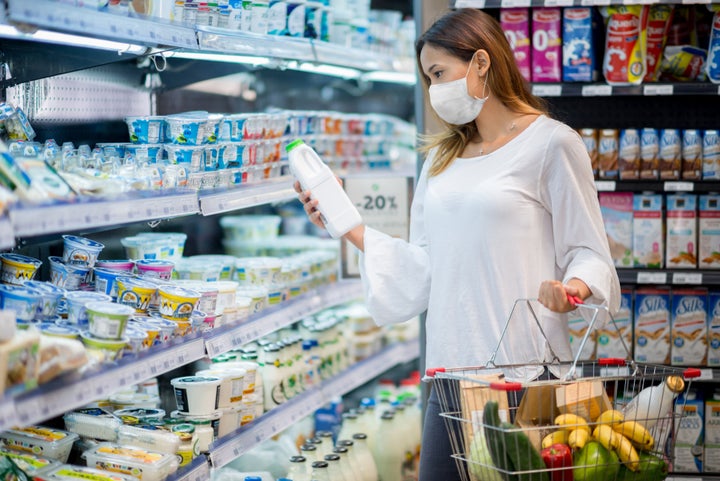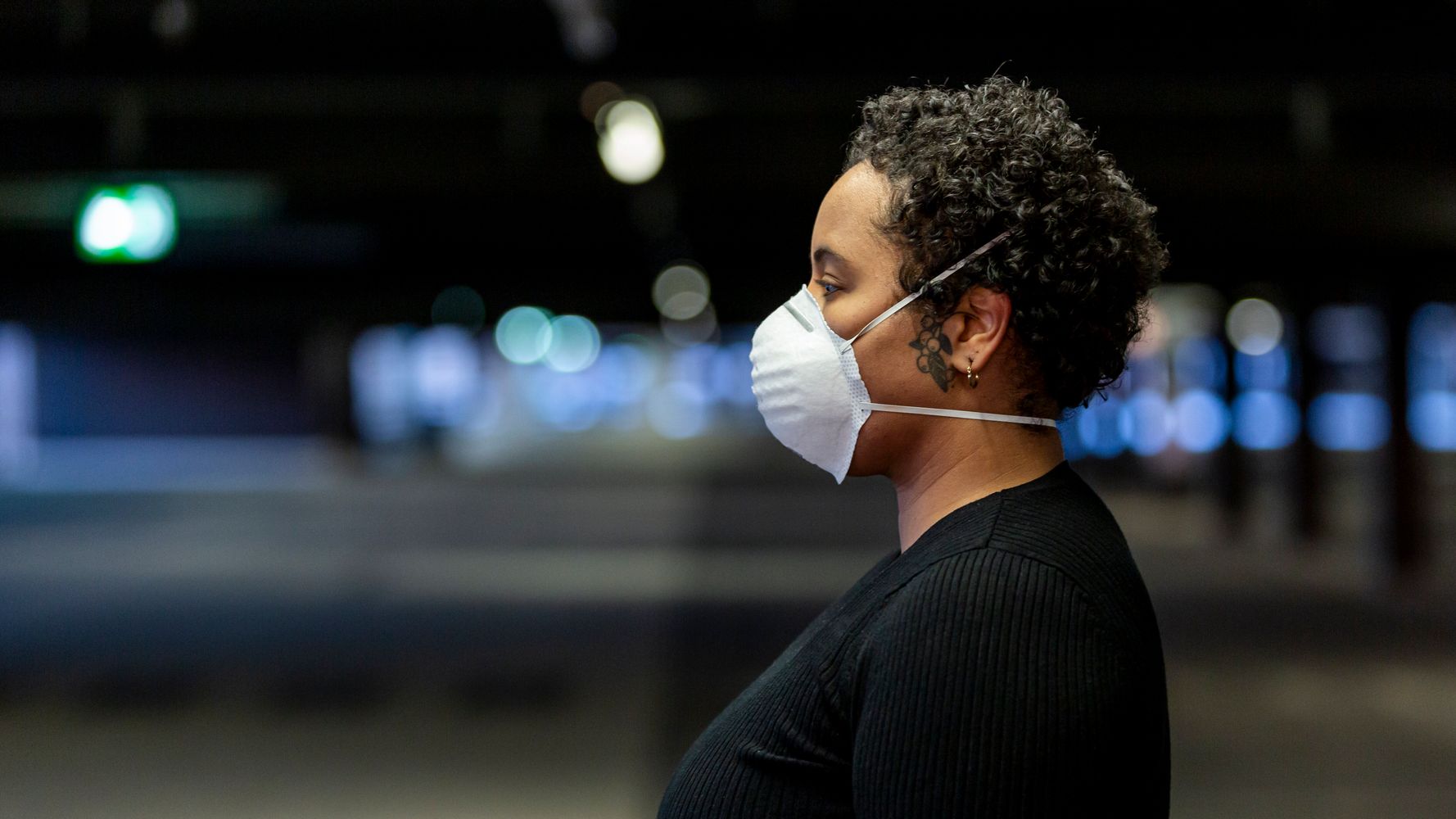[ad_1]
After more than a year of the COVID-19 pandemic, our country is inching closer to normalcy. Millions of Americans have already been vaccinated, and eligibility just opened up to everyone over the age of 16. The Centers for Disease Control and Prevention has updated safety guidelines for the fully vaccinated around travel and indoor gatherings, giving us reason to feel optimistic about increasing opportunities to safely reconnect with loved ones.
But right now, we’re living in a gray area. We’re still months from reaching herd immunity and cases are high overall. As society reopens, some people may feel reservations about jumping back into pre-pandemic activities — and the anxieties we developed over the past year won’t immediately dissolve as restrictions are lifted.
HuffPost spoke with therapists and trauma specialists about how the mental health effects of the last year may retrigger existing anxieties and spark new fears as we navigate this transitional period.
You may still feel unsafe during the vaccination period.
We won’t really be in the clear until 70% to 90% of the population has been inoculated, and many are feeling anxious as they attempt to suss out what’s safe and what isn’t.
“Until we reach more of a herd immunity, I’m actually seeing people get more anxious around the vaccines, creating an extra thing to worry about,” said Valentina Stoycheva, a clinical psychologist and trauma specialist in Northport, New York.
Depending on supply and demand in different areas, some may be dealing with the stress of trying getting vaccine appointments. And because we are all on a different vaccination schedule ― and the vaccines take some time to provide full immunity ― keeping track of who has gotten a shot versus who’s still vulnerable can add to confusion around safety as we begin to socialize again.
You might find yourself more stressed during times of uncertainty.
This entire pandemic has forced us to grappled with uncertainty in a way many of us never have before.
“Uncertainty and unreliability — not having the security of knowing what happens yet — has been traumatizing at a core level, from the very beginning,” said Maureen O’Reilly-Landy, a clinical psychologist and assistant professor of medical psychology in psychiatry at Columbia University.
We are in a much better place than we were months ago, but there are still enough unknowns about how the next months will play out to keep us feeling unsettled. We may also experience heightened stress in situations where we’re not in control ― more so than we may have before the pandemic.
You might feel uneasy or burned out in social situations.
As the newly vaccinated begin to make plans to reconnect with loved ones and make up for lost time, Stoycheva has observed “planning fatigue” leading to rumination and increased worry.
“People are planning and replanning and playing out scenarios of how different social interactions can go, everything from what we’re going to wear, to who’s vaccinated and who’s not, are we going to mask or not,” she said, adding that some express anxiety over activities like making small talk or going on a first date again.
You may also engage in more avoidant behaviors.
Some may find themselves turning down more invitations or not doing activities they used to love. This is called avoidance — which has basically ben forced on us up until this point, said Melanie Greenberg, a clinical psychologist and author of “The Stress-Proof Brain.”
Avoidance can be a coping mechanism in response to trauma and high anxiety, Greenberg explained. As our personal bubbles expand, not everyone feels ready to let go of the emotional safety net provided by staying home and only socializing with a small pod.
“It doesn’t seem like people are plunging forward — it seems like there’s caution,” she said.
You might have nightmares, racing thoughts, headaches and other PTSD symptoms.
The pandemic is a traumatic event that can cause post-traumatic stress disorder. This is especially true for first responders and medical workers, who may see a kind of delayed reaction to pandemic stressors they couldn’t fully process in the moment.
Common PTSD symptoms include flashbacks or nightmares, racing thoughts and somatic responses like heightened heartbeat, tension headaches or gastrointestinal symptoms.
O’Reilly-Landry described trauma as an “overactivation of the nervous system.” When you’re already in an overactivated state, exposure to conditions that remind you of past traumas or fearful situations — for example, hearing an ambulance siren — can trigger earlier or existing traumas and have a compounding effect.

You might find yourself in fight-or-flight mode at seemingly random times.
We’ve experienced a kind of neurological conditioning in response to dangerous situations during the past year, Greenberg said.
“Anything related to survival or a threat, your brain gives it the highest priority,” she said. The amygdala, the part of the brain that processes emotions and fear, “generates a biochemical response of hormones and neurotransmitters to gear yourself up for fight-or-flight mode.”
Once your brain associates certain stimuli with fear, it’s hard to break the connection. This explains why some knee-jerk responses stay with us even if the threat goes away.
For example, you may be two weeks past your second dose of a COVID-19 vaccine but still feel your chest tighten in a crowd of people. It’s similar to going on a hike and jumping in fear because you mistook a stick for a snake. The automatic fear response happens before you can rationally understand that you’re not in danger. It may take a while for our brains to catch up and feel safe doing certain activities.
How to prepare for and cope with post-pandemic anxiety and trauma
Recognize that we’re dealing with trauma responses built up over a difficult and painful year. Feeling overwhelmed is normal, and it’s OK to take it slow.
O’Reilly-Landry suggested making time for self-care and exercise, which can help lessen anxiety during this transitional time. She also recommended finding a source of information you can trust to combat feelings of uncertainty around pandemic safety. As we learn more, we’re better able to understand the risks.
Stoycheva also recommended setting boundaries and communicating them to others regarding “what we’re OK with and what we’re not.” Acknowledge that our levels of comfort are different from others — and that they might change as we become reacclimated to post-pandemic life.
“If right now I feel like I might be able to do something, but I’m just not sure how I’m going to feel once I go there, it’s important to remind ourselves we can check in with ourselves every step of the way,” Stoycheva said. “When we voice our boundaries to others without inner conflict, we’re both able to take care of ourselves and not go into these judgmental ways of thinking about others.”
If you or someone you know needs help, call 1-800-273-8255 for the National Suicide Prevention Lifeline. You can also text HOME to 741-741 for free, 24-hour support from the Crisis Text Line. Outside of the U.S., please visit the International Association for Suicide Prevention for a database of resources.
[ad_2]
Source


